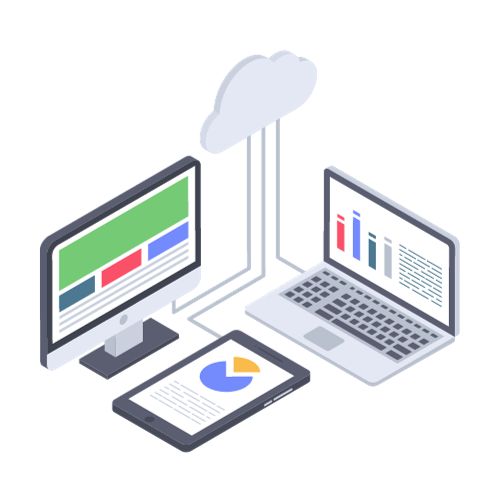Computer Science

The Computer Science Curriculum is focused on building students’ knowledge of the principles of information and computation. Each year group will build on prior knowledge of the fundamental building blocks that enable students to become competent computational thinkers. These building blocks enable students to explore how computers function and the impact computation can have in a wide range of different scenarios.
In key stage 3 we have a focus at the beginning of Year 7 on E-Safety to develop the skills required to operate in the digital world, safely and with the knowledge on how to deal with different situations. From here we then delve into the beginnings of computational thinking and the fundamentals of computer science. Students are taught how computers operate and the role that binary numbers have within the computer and will be taught how to sequence instructions and how to write algorithms, using a visual block-based programming language. This allows students to explore the constructs of programming, with a visual aid to see the outcomes of their results. Once students have had these two topics completed, they can then begin to look at how a computer is put together using the different components. From here students are exposed to more block-based programming to develop an application that uses the skills taught earlier in the year. This helps to apply their knowledge to real world scenarios. Finally, we build on the students’ insight of computers taught this year, to introduce the ideas of networks and how computers communicate.
Through Year 8 and 9, students will establish a better understanding of binary, from Year 7, and how it is used within the computer. In Year 8, we start to traverse from block-based programming and slowly introduce text-based programming, using online resources that provide a visual representation of their code. At this point we also start to introduce the second programming construct, selection. Once students have moved up into Year 9, they will finally be ready for the introduction of programming interpreters to write their code, and the final construct Iteration. In year 8, students will also begin to have a more in depth look at how the computer components work, diving into the CPU, RAM, and storage devices. They will learn about how binary is stored and processed by these components and how each one influences the overall performance of the computer. In Year 9 students will examine network hardware and how they are used to develop networks. They will be exposed to a range of components such as, routers, cabling, WiFi, switches, and servers. From this they will then be able to begin looking at how to secure these networks from internal and external threats, using different network security techniques. Alongside these fundamentals of computer science, students will also look at the impacts that computers have on society (Year 9) and the laws that govern them (Year 8), along with being taught how to develop databases and websites (Year 9). Finally at the end of Year 9 students look at modelling both 3D modelling and the modelling of spreadsheets, completing a comprehensive look into computer science.
As students move into key stage 4, students will start to embed all the knowledge that they have learnt at key stage 3 and grow this into a further understanding of the topics. Students will cement their understanding of computational thinking and the 3 constructs sequence, selection, and iteration. They will also become competent in their ability to decompose and abstract different problems that they are given. Students will have the opportunity to test their programmes and effectively debug code for errors. Students will also study how computers represent data building on the work in year 8 and 9, alongside knowing how to calculate the sizes of files and how different compression techniques can be applied to help with data transmission, amongst other benefits. Students will further look into computer systems from year 8 and analyse how the different components of the computers work and how they can contribute to the performance of a computer system. Networks and network security will also be revisited, with students looking at the performance of a network and how this can be improved with the use of different topologies. Students will then return to databases and in particular SQL. Students will learn how to write SQL statements to optimise the use of a databases. Students then create a better understanding for themselves into how computer science is moulding society, the environment and legislation, around the world.
Key stage 5 takes into consideration all that has been taught at key stage 3 and 4. The work that students have been building on throughout the curriculum is all used to stretch the students’ capabilities in computer science. Students will be introduced to new concepts when writing their algorithms, such as Object-Oriented Programming. They will learn about different sorts of algorithms, which are used to sort and search data, alongside developing their own projects and solutions on a more complex level. Students will also heighten their awareness in all areas that has been taught at key stage 4, with additional subject knowledge into different types of computer architecture and networking techniques. They will be faced with the idea of Big Data for the first time and how this can be used to help businesses gather and manipulate data that they gather.
Through this journey of computer science, at the end of Key Stage 5, students will be well rounded computational thinkers, with an in-depth grasp of the further issues surrounding computer systems.
